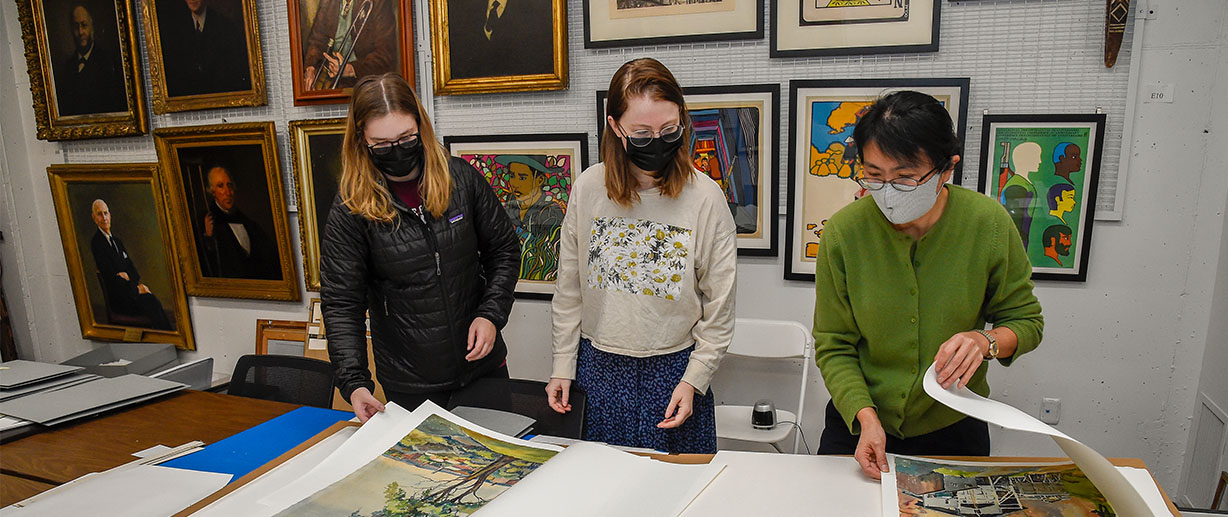By Robert W. Dalton
Before the fall semester began, Lizzie Richards ’23 figured law school was in her future after she graduated from Wofford College. Working with Dr. Youmi Efurd, Wofford’s curator, on a restoration project has her going in a new direction.
“It took me about two seconds to sign up,” says Richards, a history and art history major from Columbia, South Carolina. “I was excited, and now I want to be a conservator.”
Richards recently traveled with Efurd to Greensboro, North Carolina, to pick up 13 Julia Elizabeth Tolbert works on paper that were restored by HF Group/ECS Conservation. The project is funded by a Preservation Assistance grant from the National Endowment for the Humanities.
The funded project was a survey of 149 works. The museum wanted to continue its preservation efforts and decided to restore 13 works.
“These works are important in terms of their themes and styles,” Efurd says.
Tolbert was active from the 1930s through the mid-1950s. Her work includes Southern landscapes, still life and portraits, and includes an emphasis on urban realism of Black residents in the South during the 1940s and 1950s. Wofford became the largest holder of her art in 2011 – with more than 300 pieces – when two generations of her family donated nearly all of her work to the college.
Tolbert’s works in the Wofford collection can be viewed here and here.
Efurd hired Richards and five other students to assist with the preservation project, and with a relocation and storage project that is supported by an Institute of Museum and Library Services Inspire! Grant for Small Museums.
Walker Antonio ’23, an art history and studio art major from Kilmarnock, Virginia; Blake Batten, an anthropology and sociology and art history major from Anderson, South Carolina; Olivia Hartley ’24, an undeclared major from Barnwell, South Carolina; Emma Humphries ’22, an art history and government major from Gaffney, South Carolina; and Channing Wellman ’23, a Chinese and history major from Marion, North Carolina, also are members of the team.
The students received training from a professional conservator on proper handling, condition reporting and other skills.
“We’ve each worked on a different collection,” says Batten, who worked on the Helen DuPre Moseley collection of drawings. “The work is so creative. We had to be more creative to describe it.”
